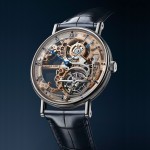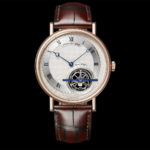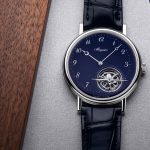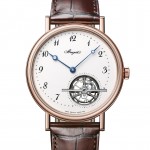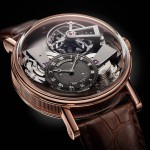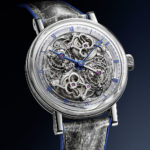Up Close: Breguet Classique Tourbillon Extra-Plat Squelette 5395
Thin and gorgeously detailed.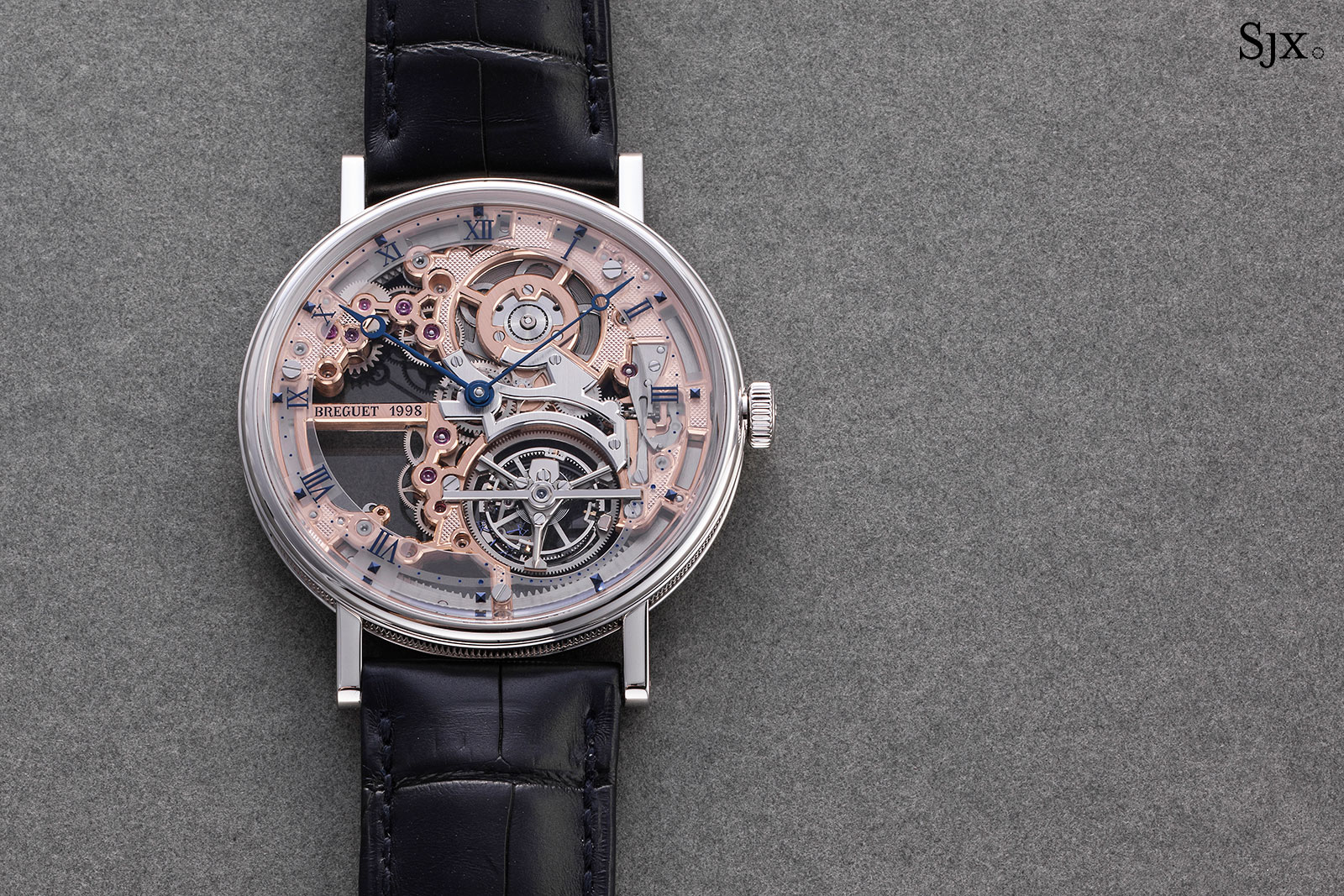
In terms of press, Breguet’s most significant watch of the year is a relatively simple one, the Type 20 for Only Watch, which sold for 210,000 Swiss francs at the charity auction, or just over four times the high estimate. But the most significant watch in terms of haute horlogerie is the Classique Tourbillon Extra-Plat Squelette 5395.
The ref. 5395 a large, thin, and ornate watch that’s actually a variant of the large, thin, and simple ref. 5367 introduced two years ago. More elaborate than the typical Breguet, the ref. 5395 is beautifully executed, down to the smallest elements, like the blued-gold hobnail hour markers or mirror-polished countersinks. But most importantly, the movement within is finished exceedingly well – by hand – to a level that’s a cut above the average Breguet complication. Most of that is obvious in the photos below.
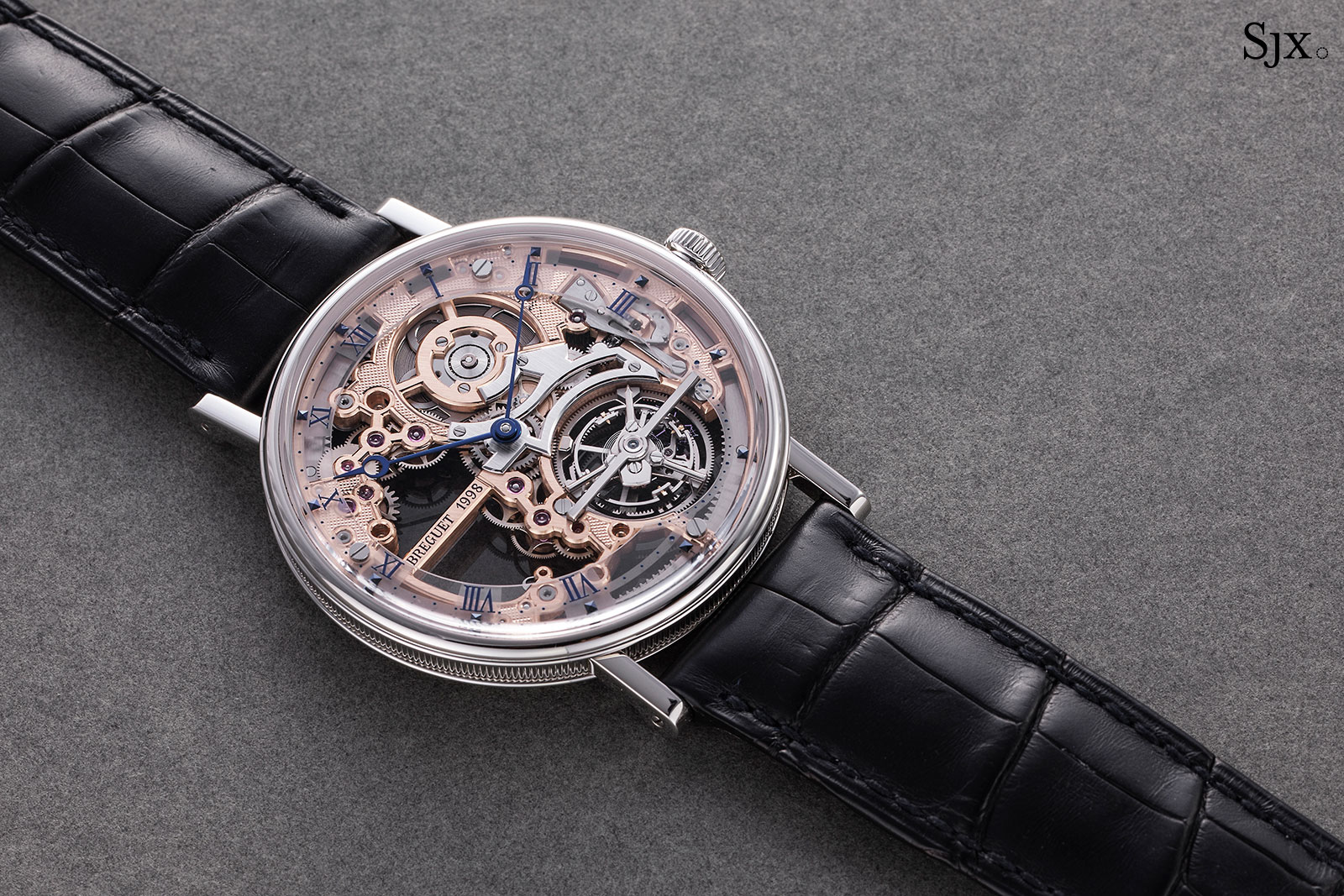
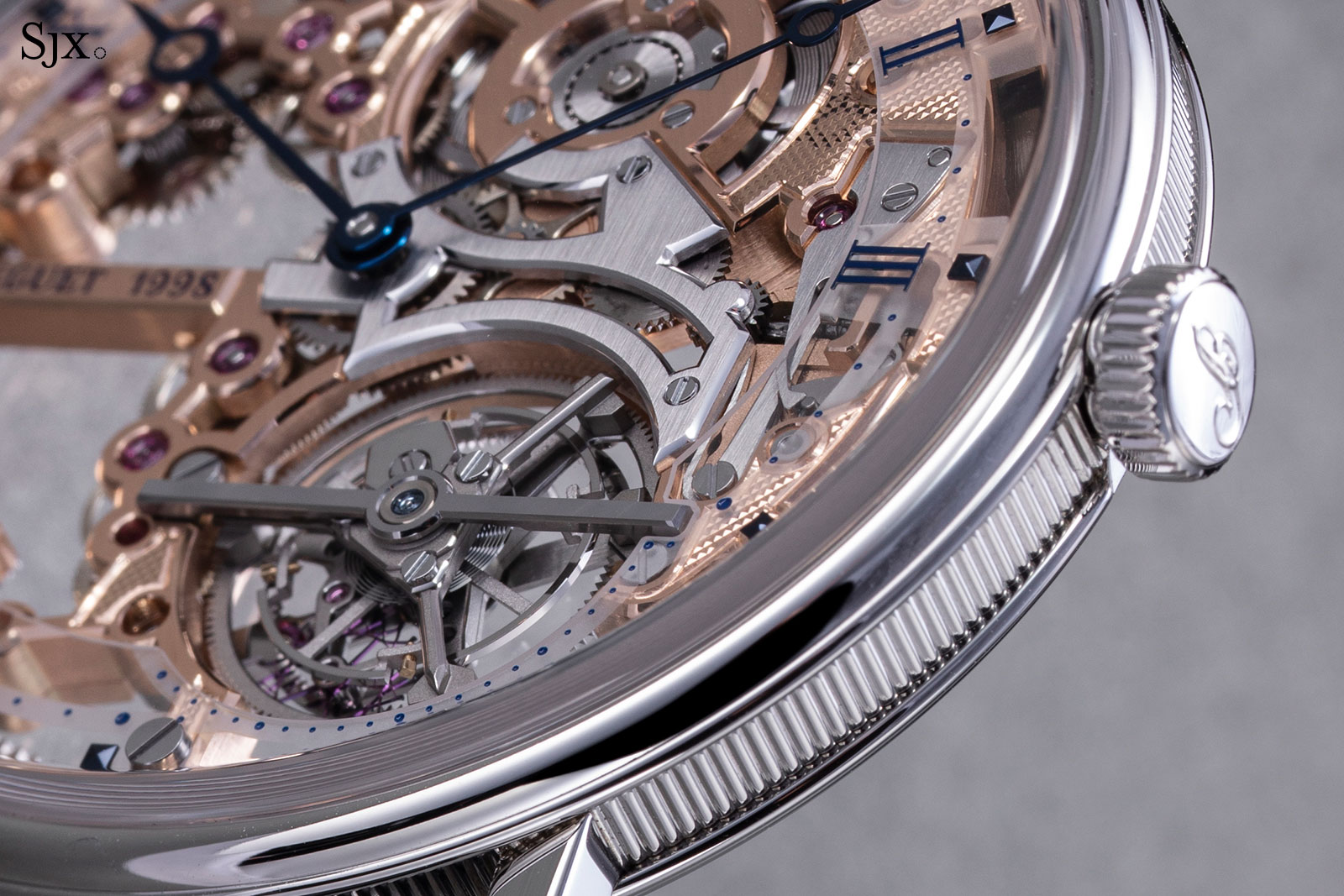
Graceful proportions
At 41mm and just 7.7mm high – thinner than the 8.1mm Royal Oak “Jumbo” – the ref. 5395 sits elegant and flat on the wrist. Compared to larger, and usually more complicated, Breguet watches, this feels like what a classical Breguet should be.
Because of its diameter, however, it can look like a dinner plate on smaller wrists. And the ref. 5395 doesn’t work on hairy wrists either, because the skeletonisation leaves a wide gap in between the bridges.
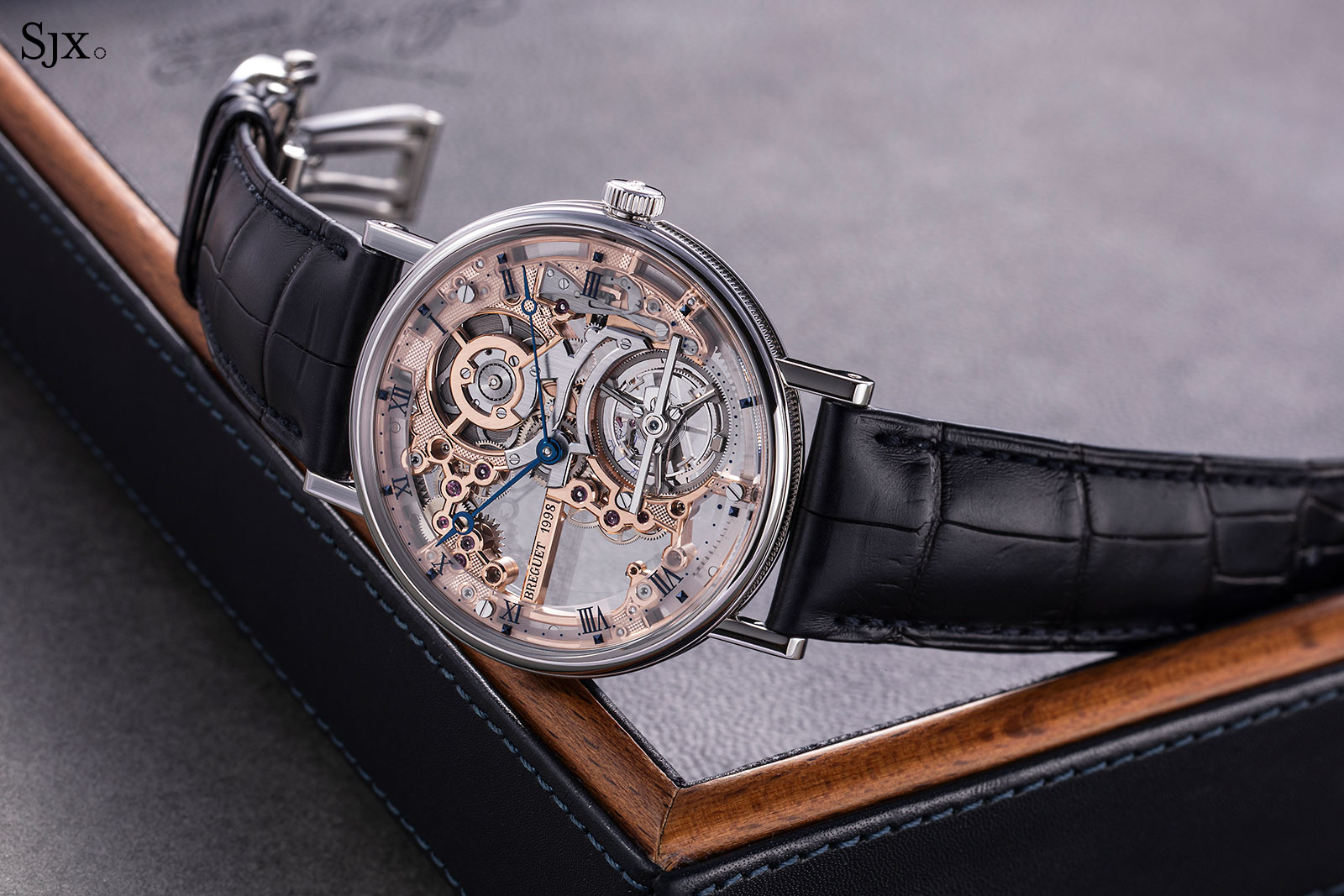
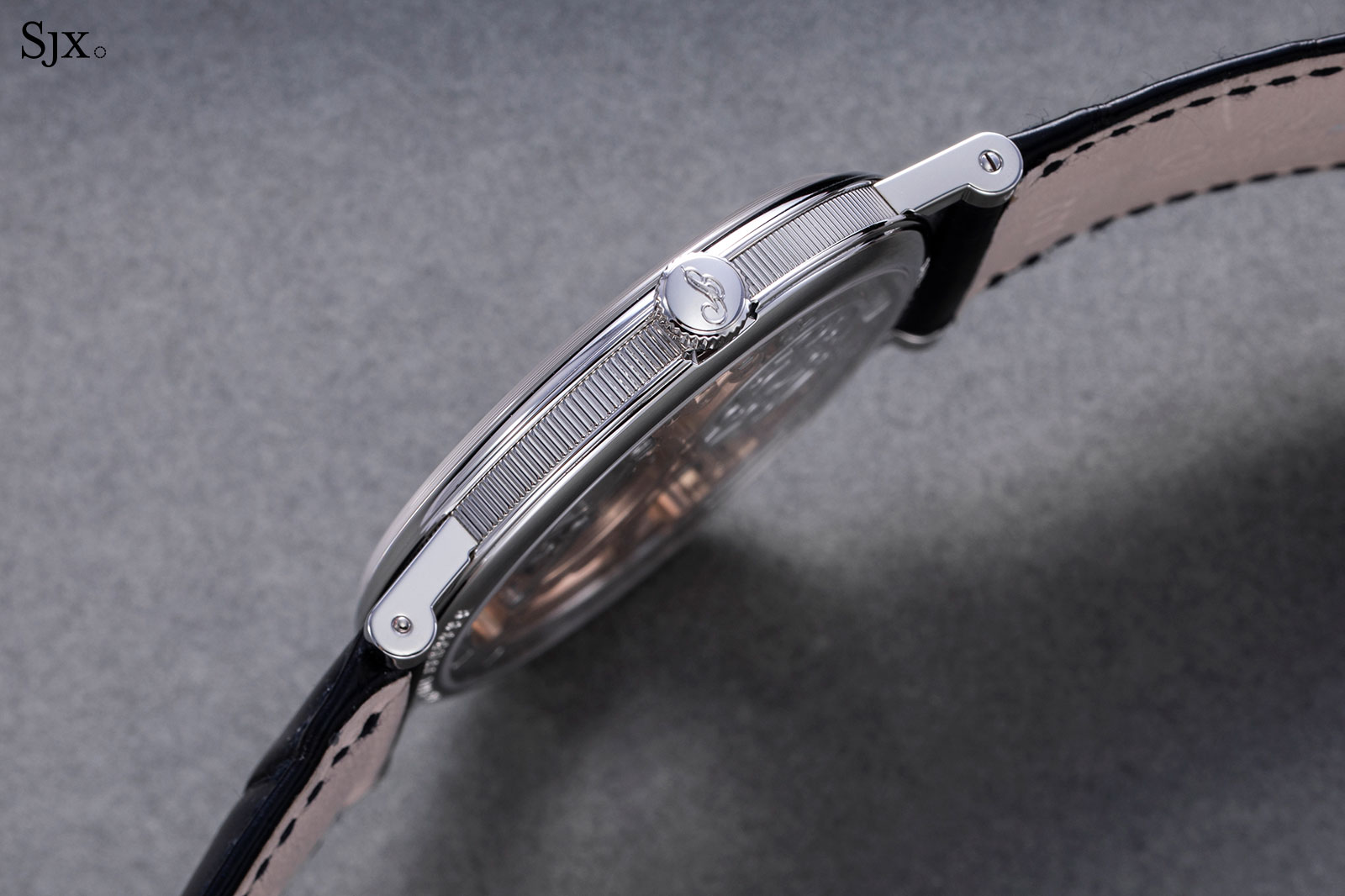
That’s because the skeletonisation of the cal. 581SQ inside is extreme; according to Breguet some 50% of the movement’s mass was removed. And that’s taken off a movement that’s already minimal in volume, being just 3mm high (and 16”’, or 36mm, wide).
Most of the visual detail of the movement is centred on the tourbillon regulator and barrel, with the wheels of the going train and the keyless works in between. The visuals of the movement are enhanced by the domed sapphire crystal, which lets more light in and allows the movement to be admired from an angle.
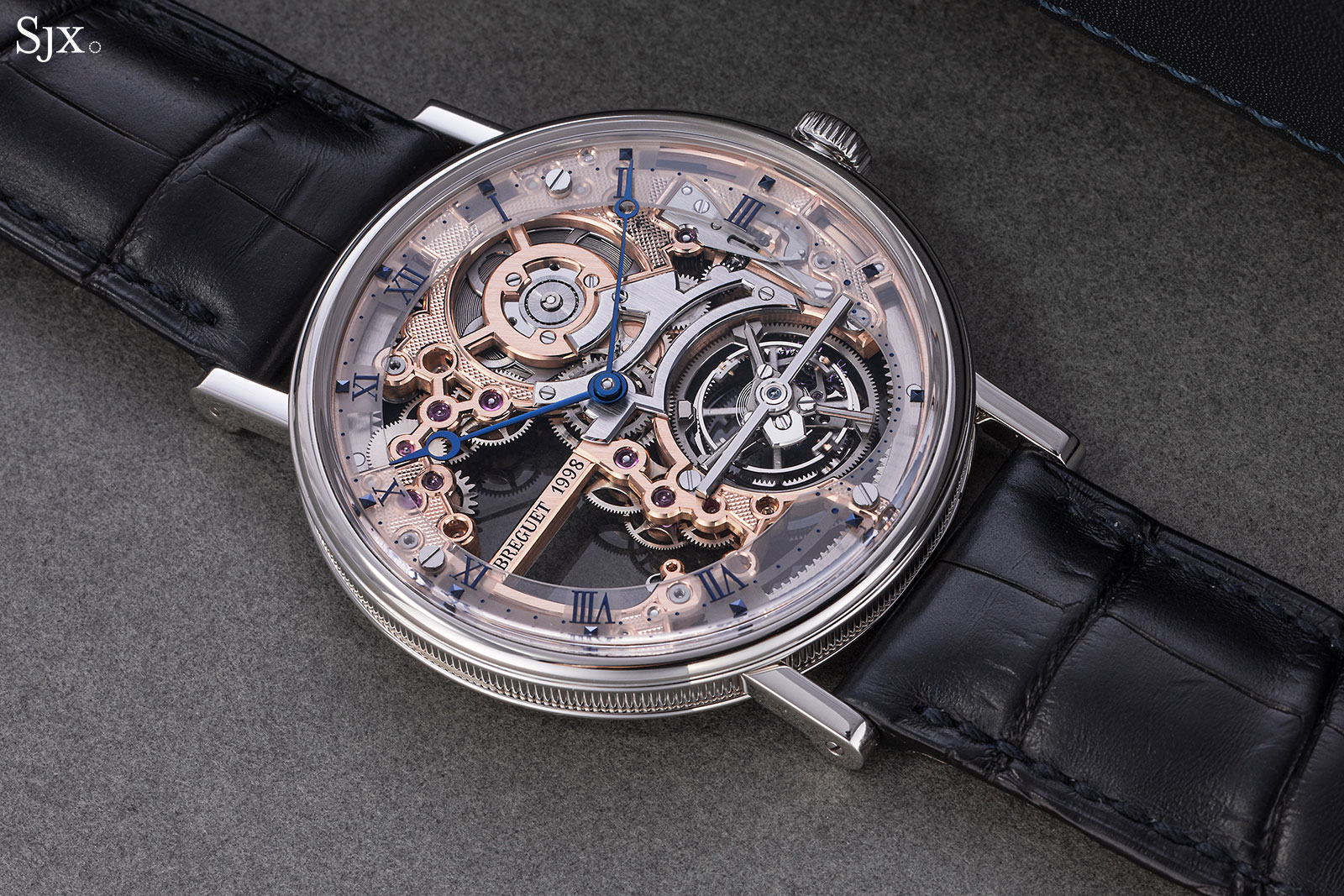
Elaborate decoration
The aesthetic of the movement is an unusual mix of new and old. Since there is no dial, the most obvious part of the quintessential Breguet style is not quite obvious, except in the blued-steel pomme hands. But elements of the look are gently incorporated into the movement.
Much of the movement is also expensively fabricated. The bridges and base plate are solid 18k gold in contrasting colour – red gold for the platinum case and white gold for the rose gold case – and then decorated with clous de Paris, or hobnail, guilloche that’s engraved the old-fashioned way, with a manually operated rose engine, as it is done for the traditional, silvered Breguet dial. At the same time, the combination of a gold movement and engine-turned base plate brings to mind a watch distantly inspired by 19th century Breguet, the F.P. Journe Tourbillon Souverain Vertical.
The hobnail movement decor is subtly echoed in the semi-frosted sapphire chapter ring that carries the hour markers, Roman numerals printed in blue lacquer and accented with a small, blue-coated gold hobnail.
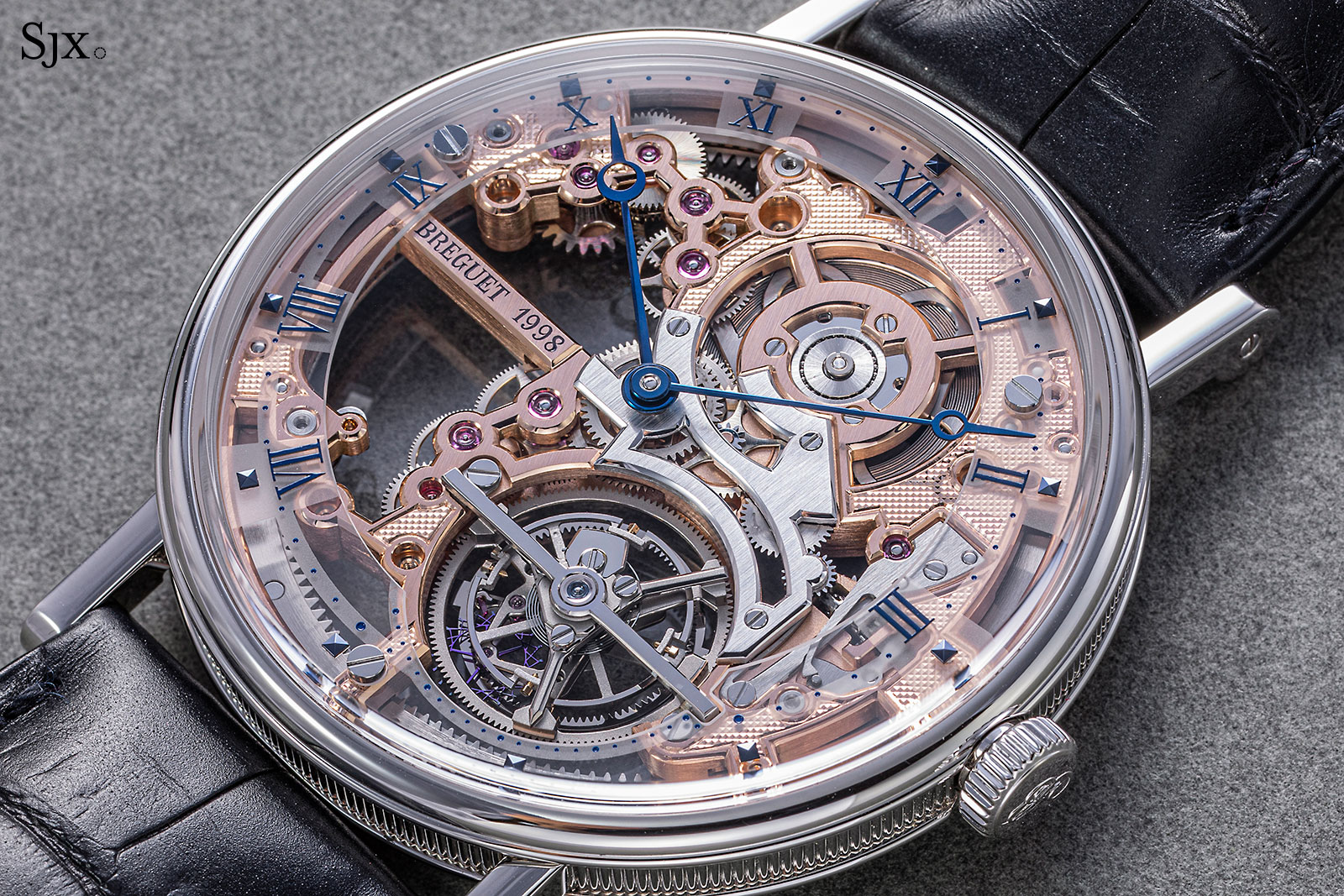
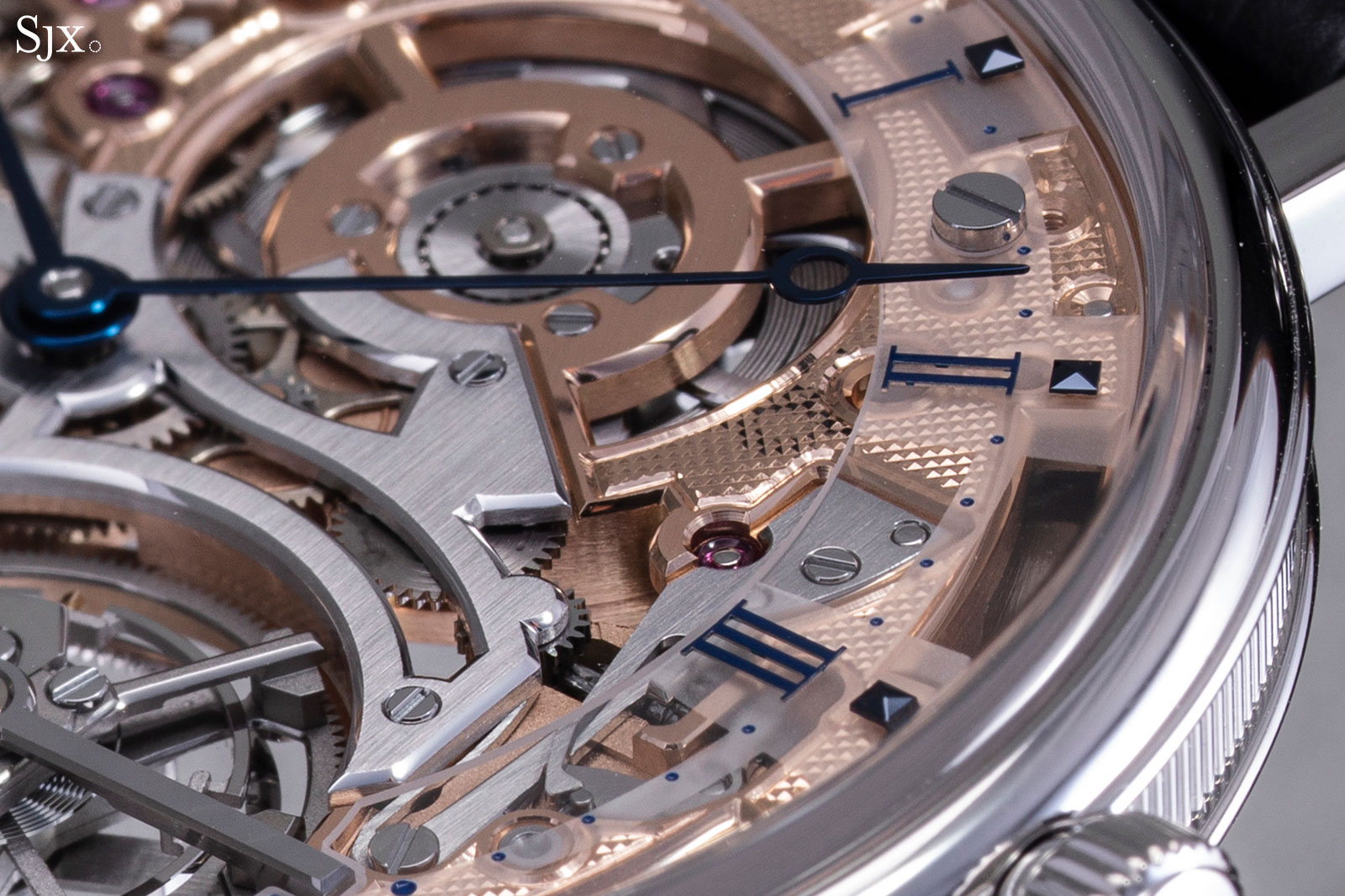
Only the segments of the sapphire chapter ring with numerals or markings are frosted for legibility, with the rest being clear
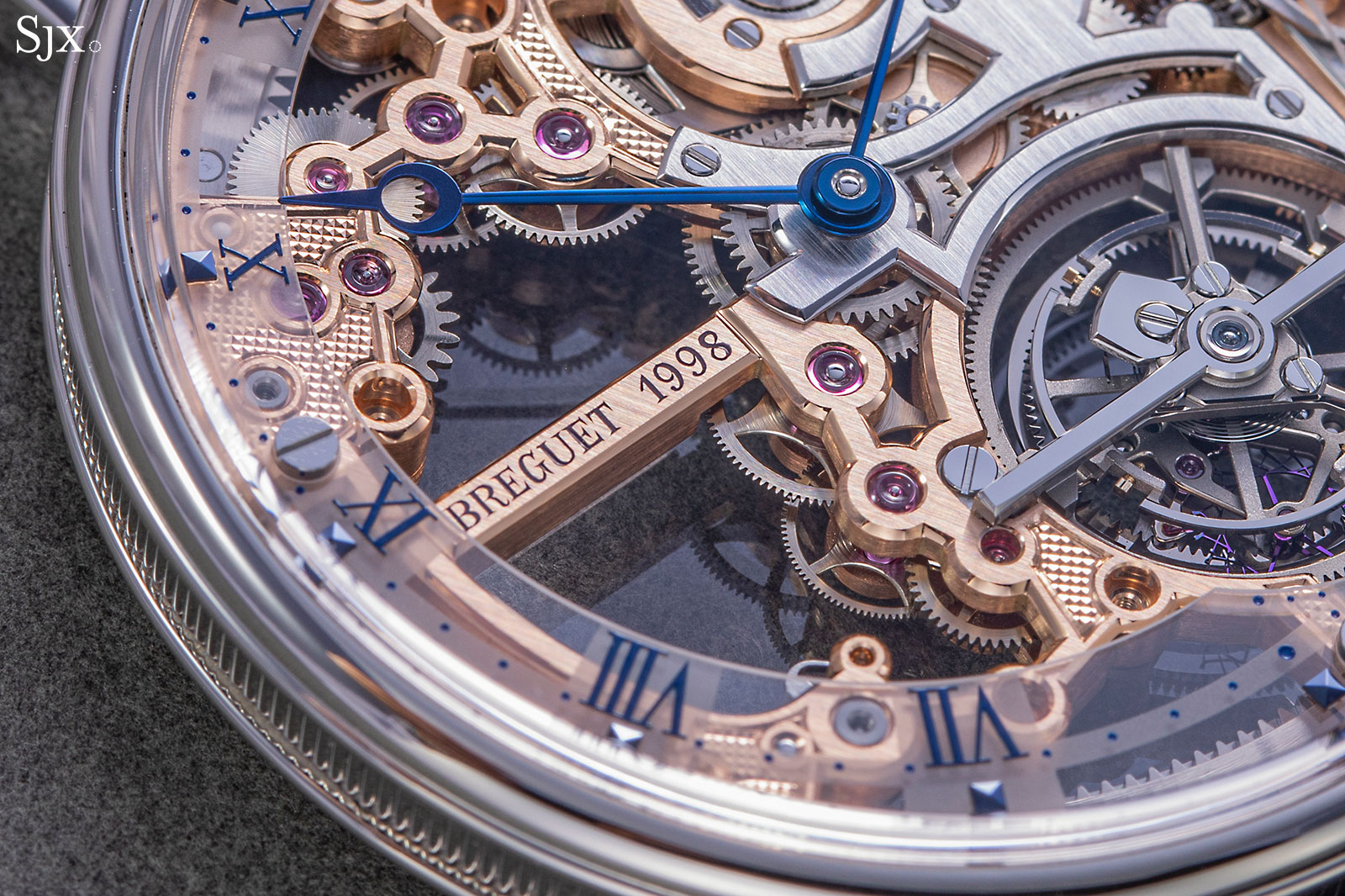
The logo and serial number on the front are hand-engraved, and then filled with black lacquer
Though Breguet has often emphasised technology and innovation in its recent watchmaking, it appears that traditional movement finishing has not been forgotten.
The cal. 581SQ is finely decorated through and through, with many details that reflect hand finishing, instead of that done by machine. In fact, the finishing of the movement is a world apart from that of entry-level Breguet movements that sport mechanically-applied finishing.
The movement boasts numerous – just try counting them – sharp, inward angles in its anglage, the polished, bevelled edges of parts. They are found on both the solid gold bridges and base plate, but also the steel bridge for the keyless works.
All the screws and jewels also sit in mirror-polished countersinks, while the screw heads have chamfered slots and edges. And the arched spokes of the wheels are also chamfered.
The one element of hand finishing that’s inconsistent is the engraving of the logo and serial on the front. While the rest of the markings on the movement are engraved by machine, that’s done by hand and it’s not as refined as the very best hand engraving.

The tourbillon bridge is flat and black polished
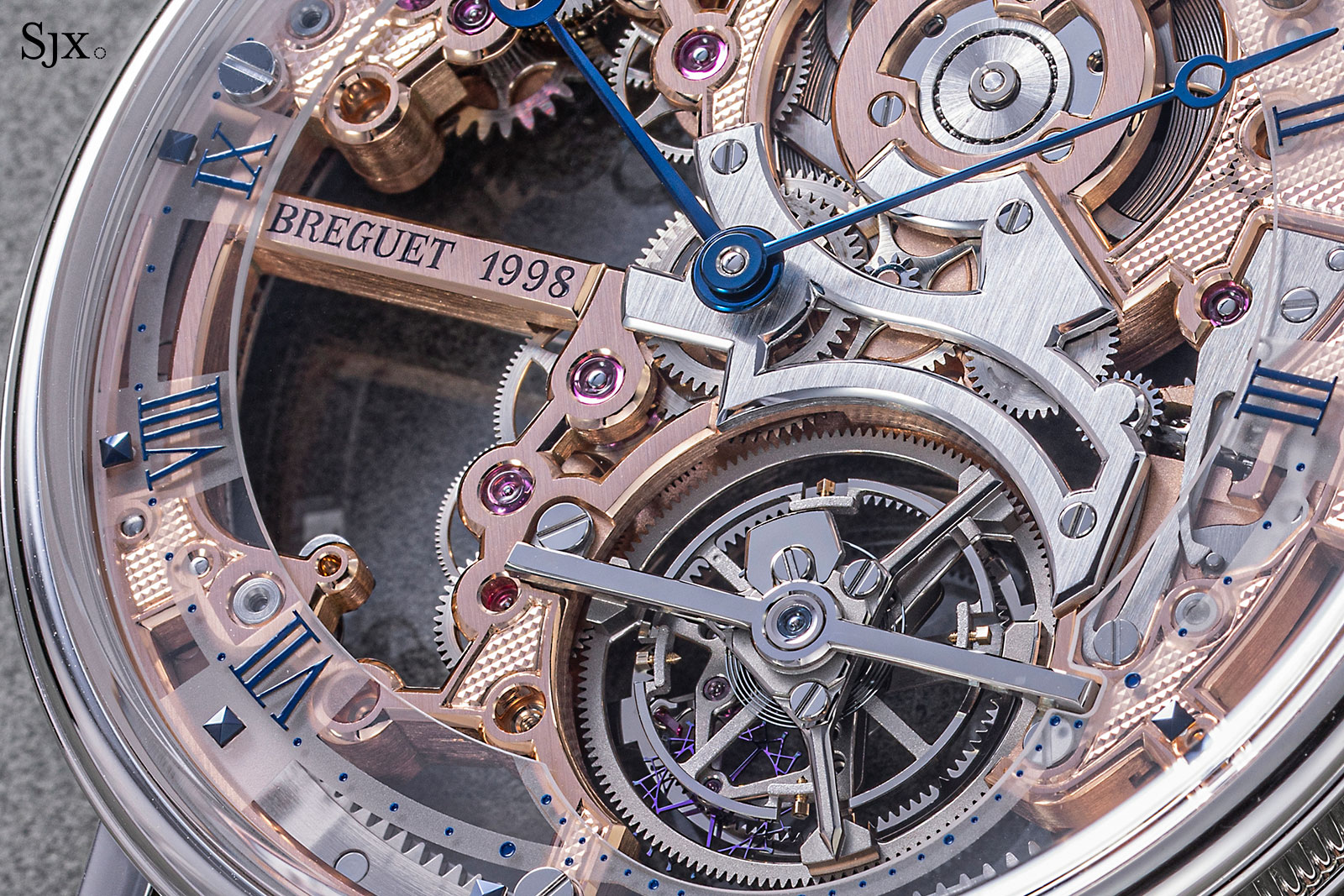
Note the finishing on the steel bridge for the keyless works
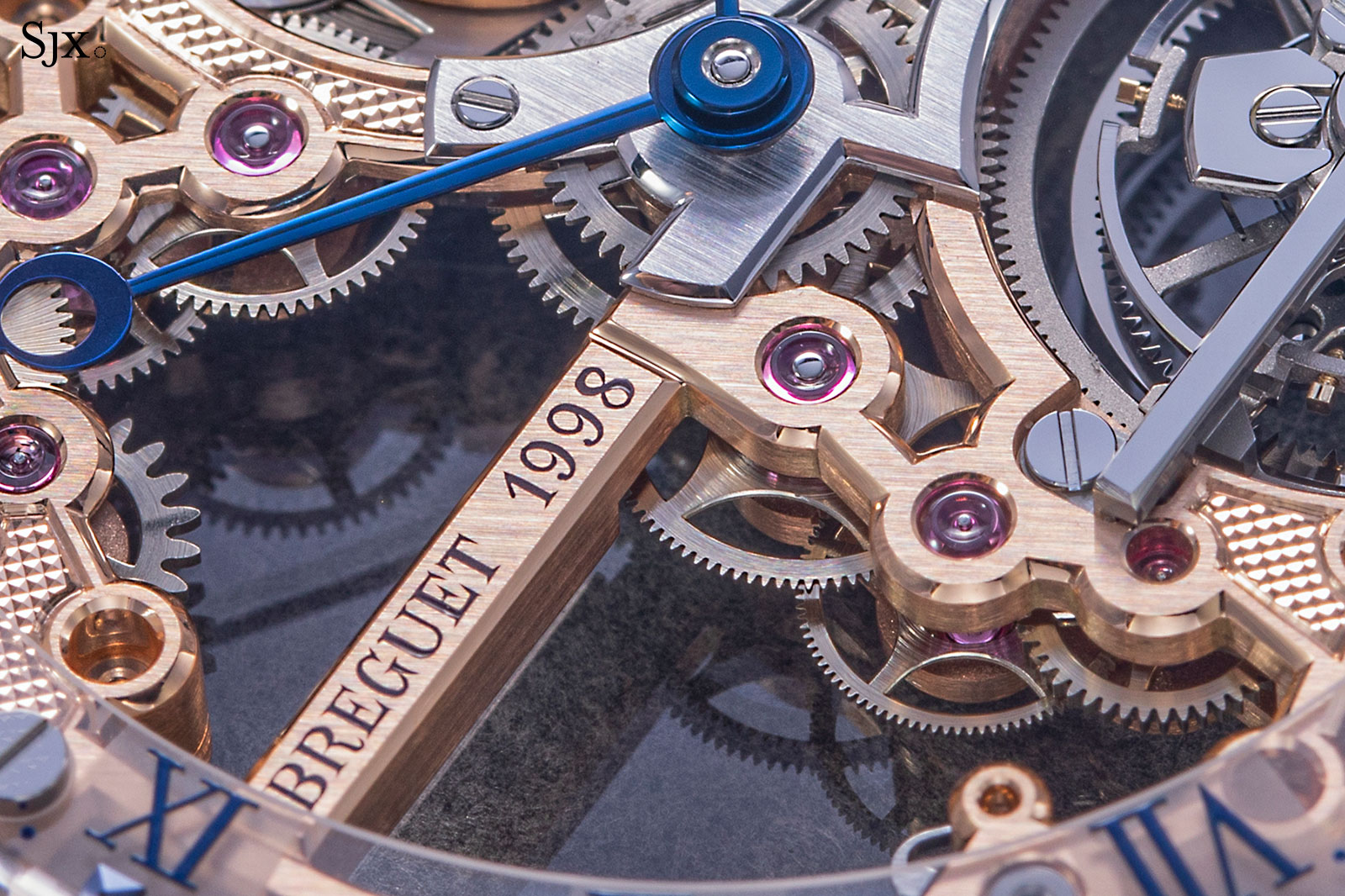
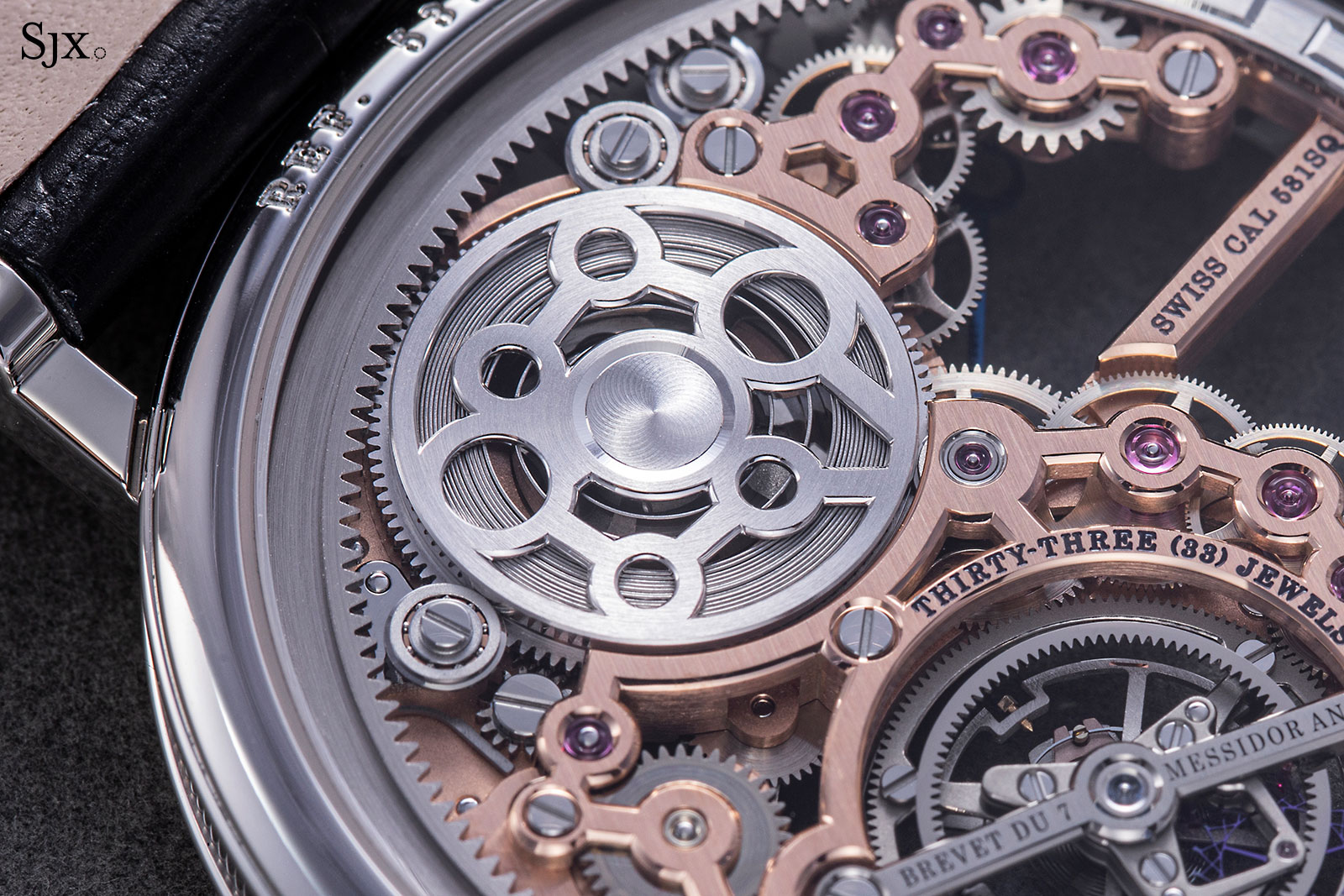
The barrel ratchet and bridges are open-worked to form a series of circles, which is meant to evoke the cosmos, a motif that Breguet has used frequently on its complicated watches
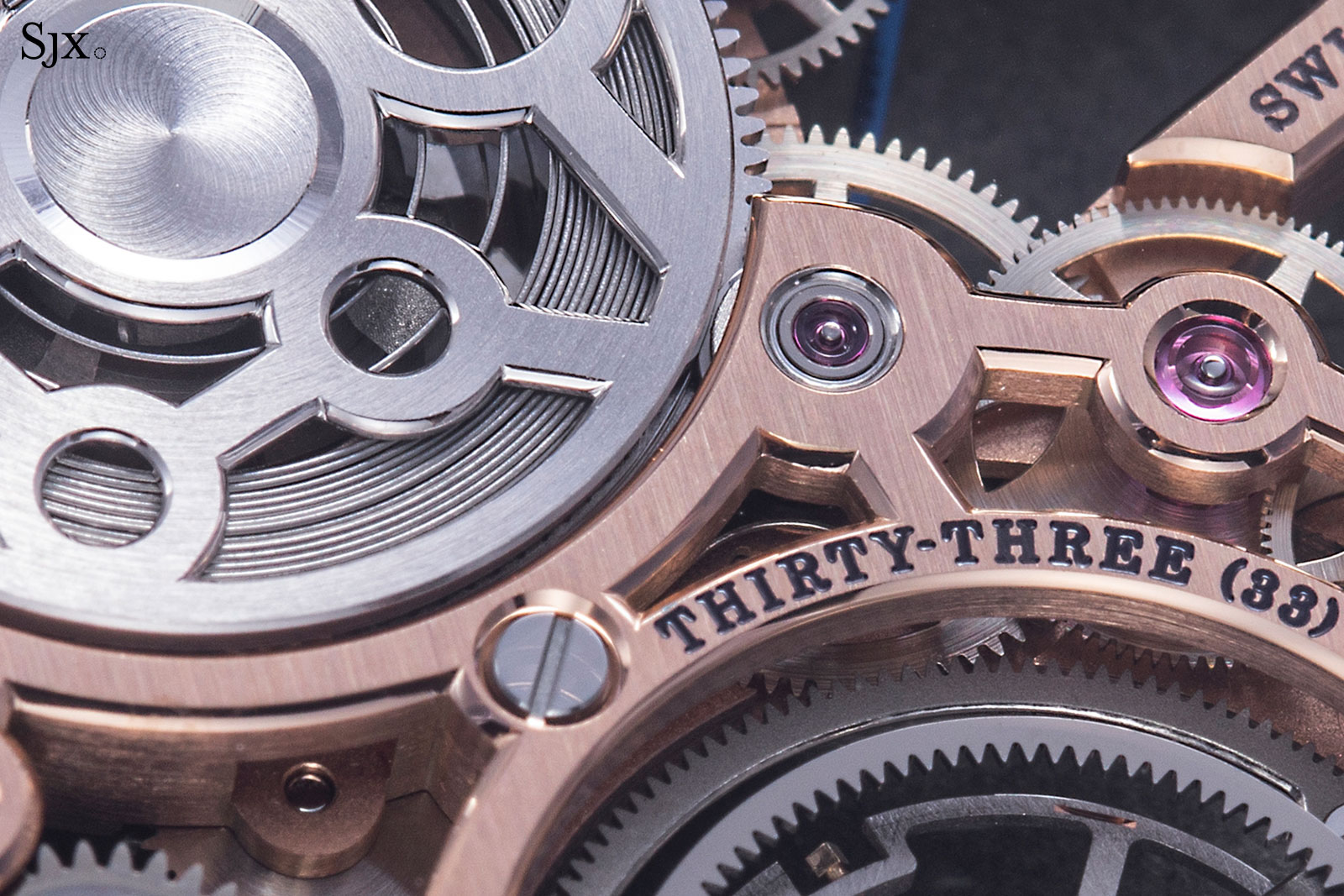
Even the barrel ratchet has sharp inward angles on its bevelling
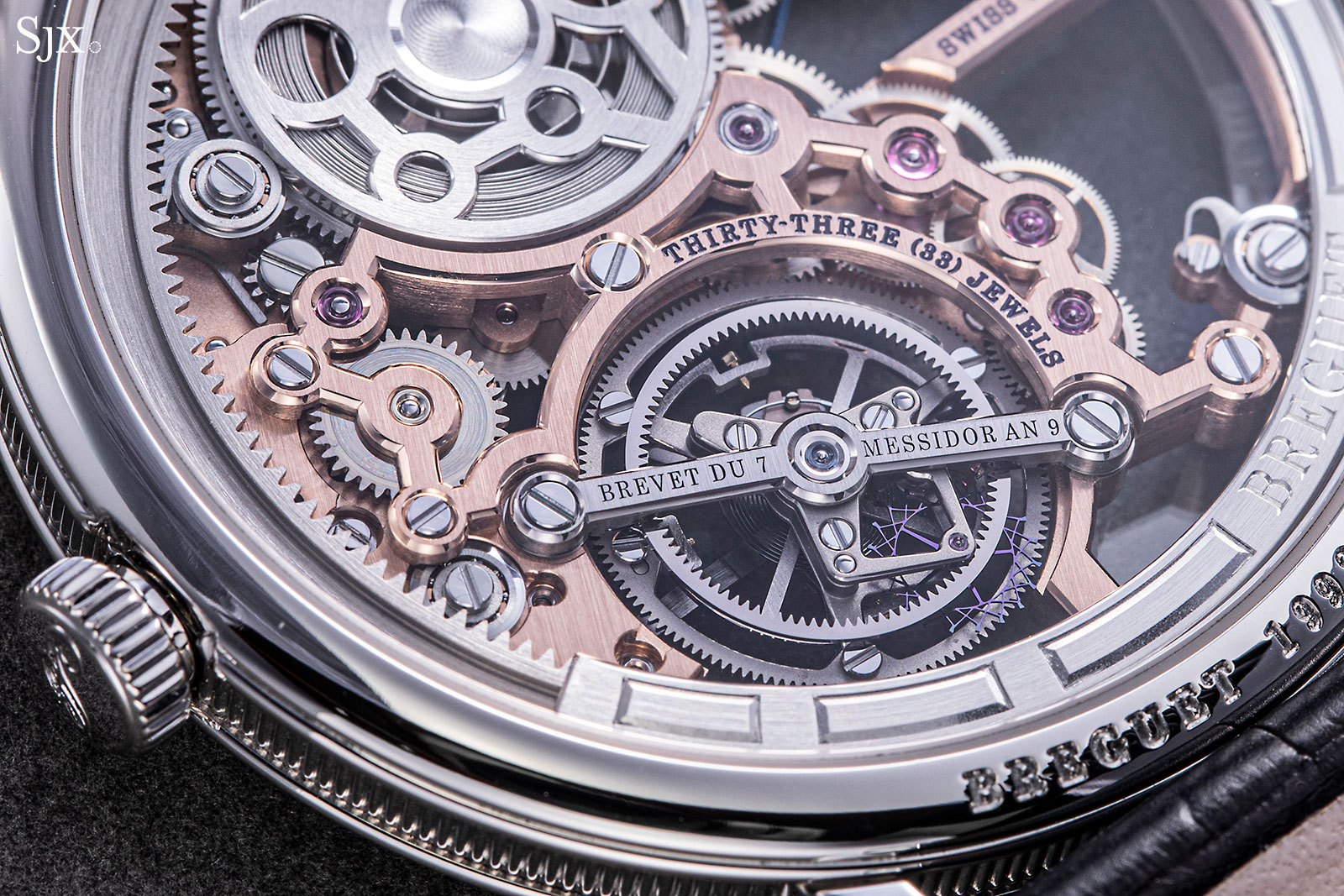
“Brevet du 7 Messidor An 9” refers to the date Breguet patented the tourbillon, based on the French Republican calendar used during the French Revolution – on the 7th day of the 10th month of the 9th year, or June 26, 1801
And a bit of tech
One element of the movement is lacks hand finishing is the tourbillon cage, because it is titanium. Ideal for the cage because of its lightness, titanium cannot be finished to the same degree as steel or gold – an acceptable compromise given the utility of the alloy. For the same reason, the balance wheel is titanium, although it has gold screws for regulation.
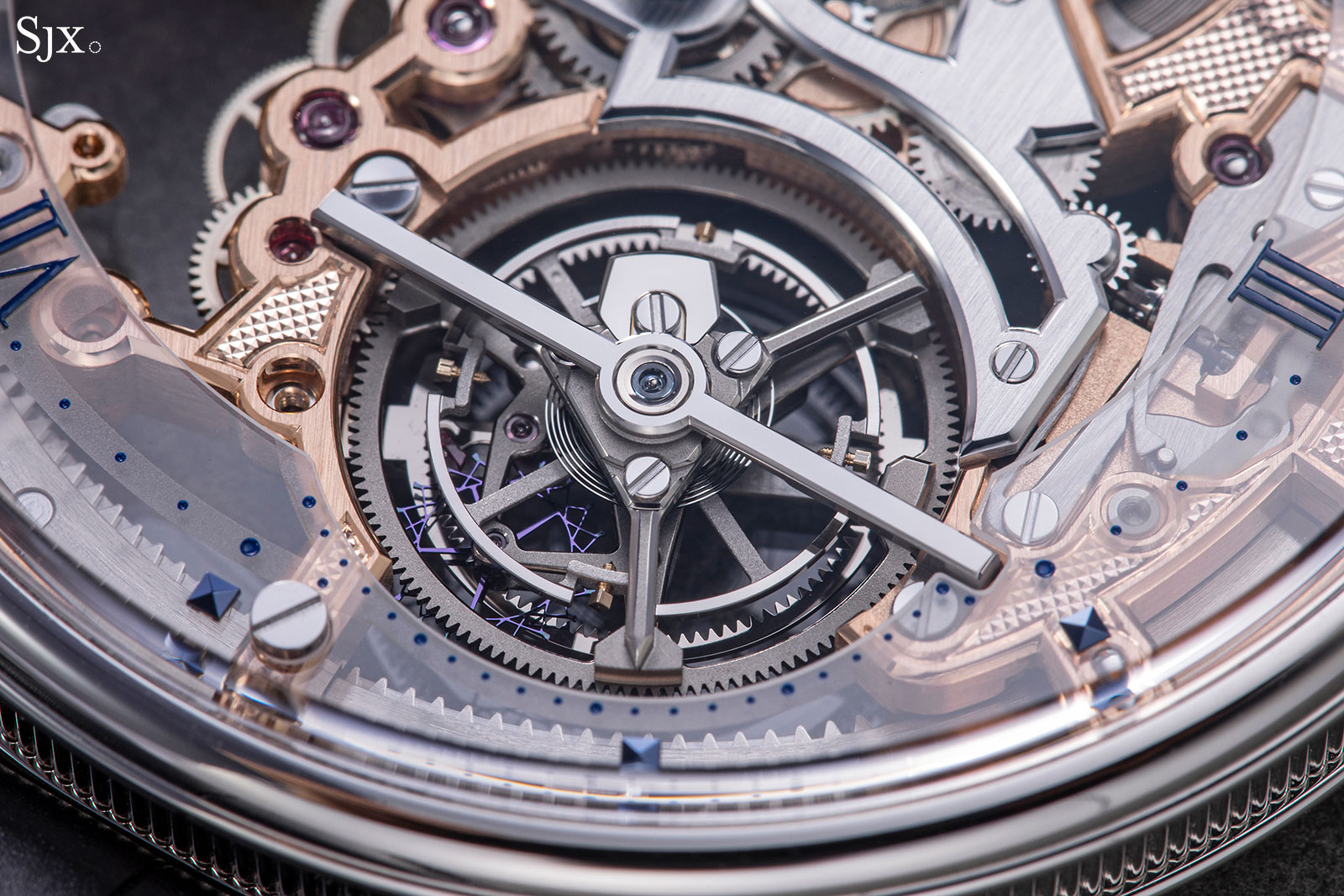
The rest of the tourbillon is also modern in terms of materials: the escape wheel and hairspring are silicon. As a result, despite the tourbillon being relatively large, and the balance oscillating at 4Hz, quicker than most tourbillons, the movement still manages a longish, 80-hour power reserve.
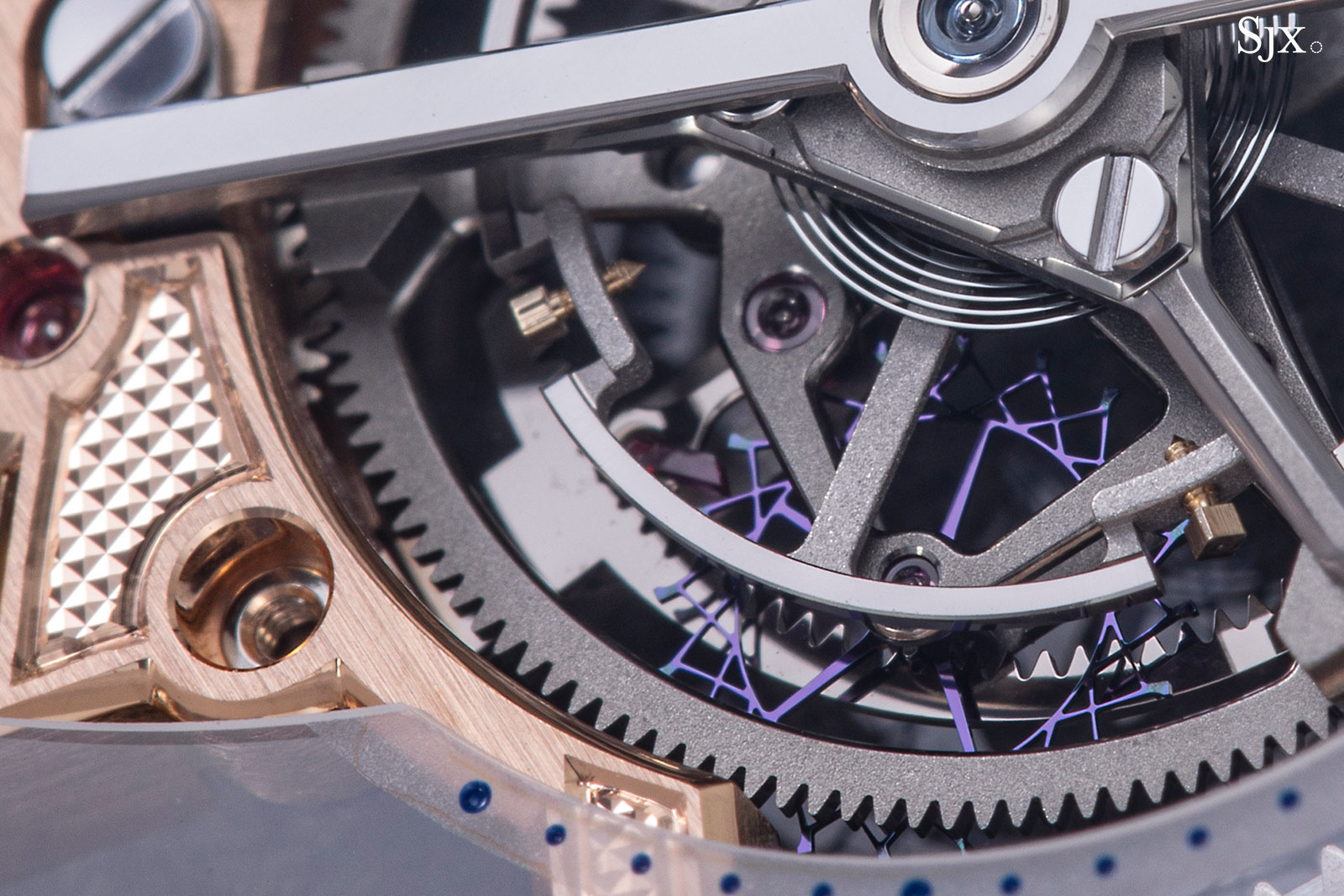
The simpler finish of the titanium tourbillon cage, with the silicon escape wheel visible just below
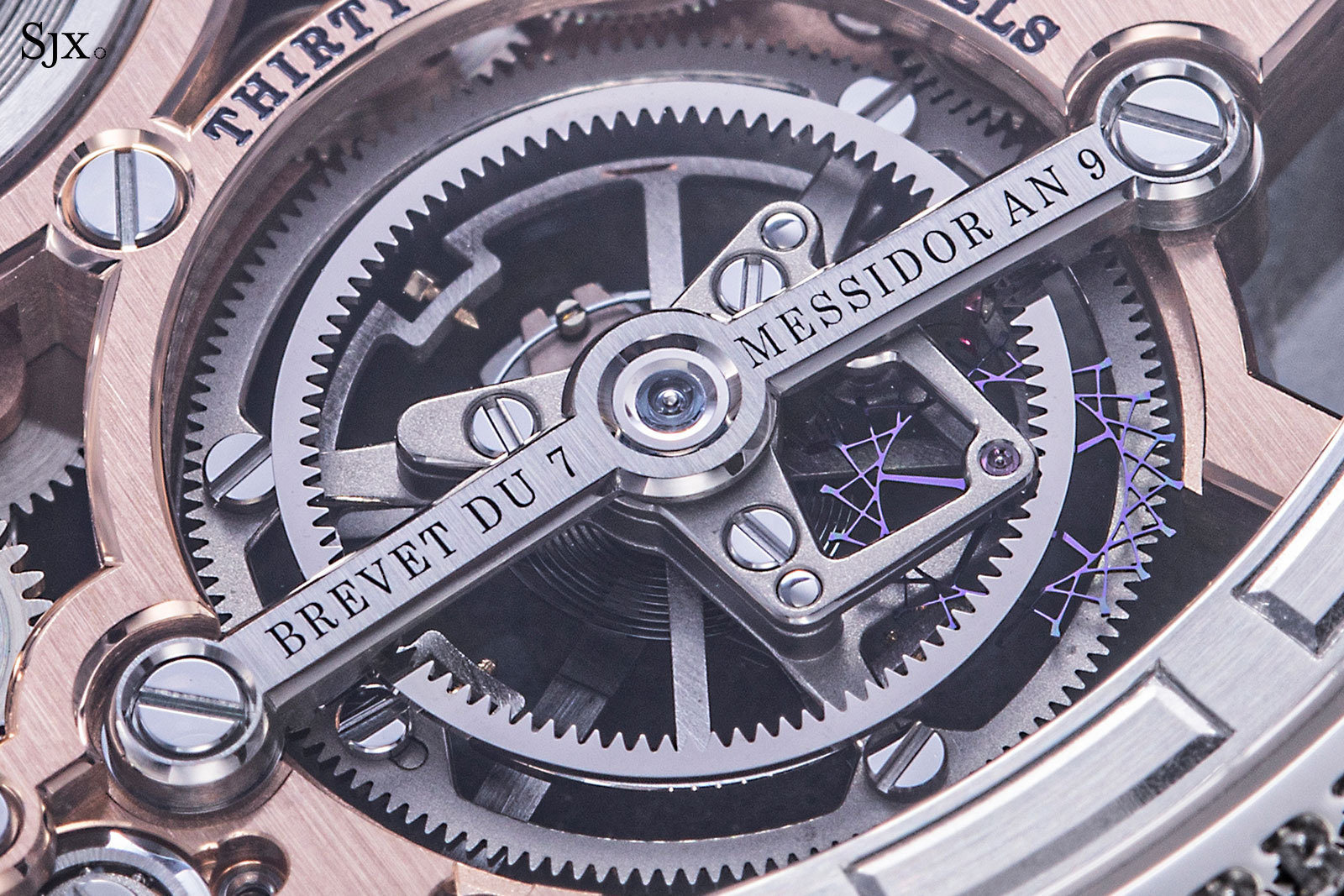
Despite being silicon, the escape wheel teeth reveal tiny spots of lubrication
Against the grand old Breguet name and the hand finishing across the movement, the silicon and titanium feels a bit out of place, though it has to be said there are performance gains from such materials. But the use of modern materials is inevitable, given the inclination of Breguet (and its sister companies in Swatch Group like Blancpain and Omega) towards the latest technology in watchmaking.
The final distinctly modern element in the movement has to do with its construction: the peripheral winding mechanism. It’s centred on a narrow, semicircular platinum weight, sitting on a large, toothed gear that rings the movement, and mounted on four rollers containing ball bearings, that winds the mainspring via a small wheel. The peripheral rotor is a key element of the movement’s thinness, and also means none of the mechanics are obscured by a full rotor.
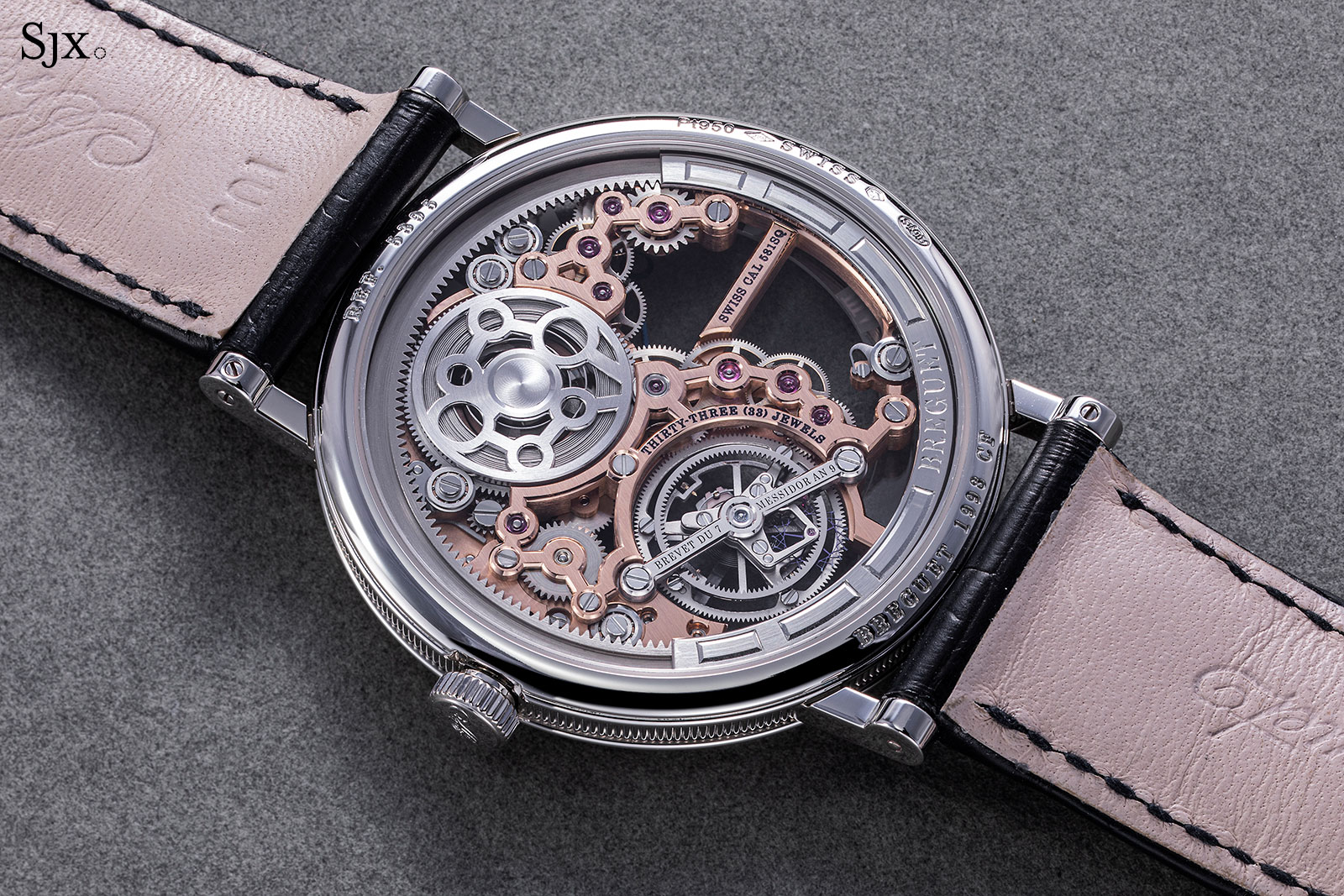
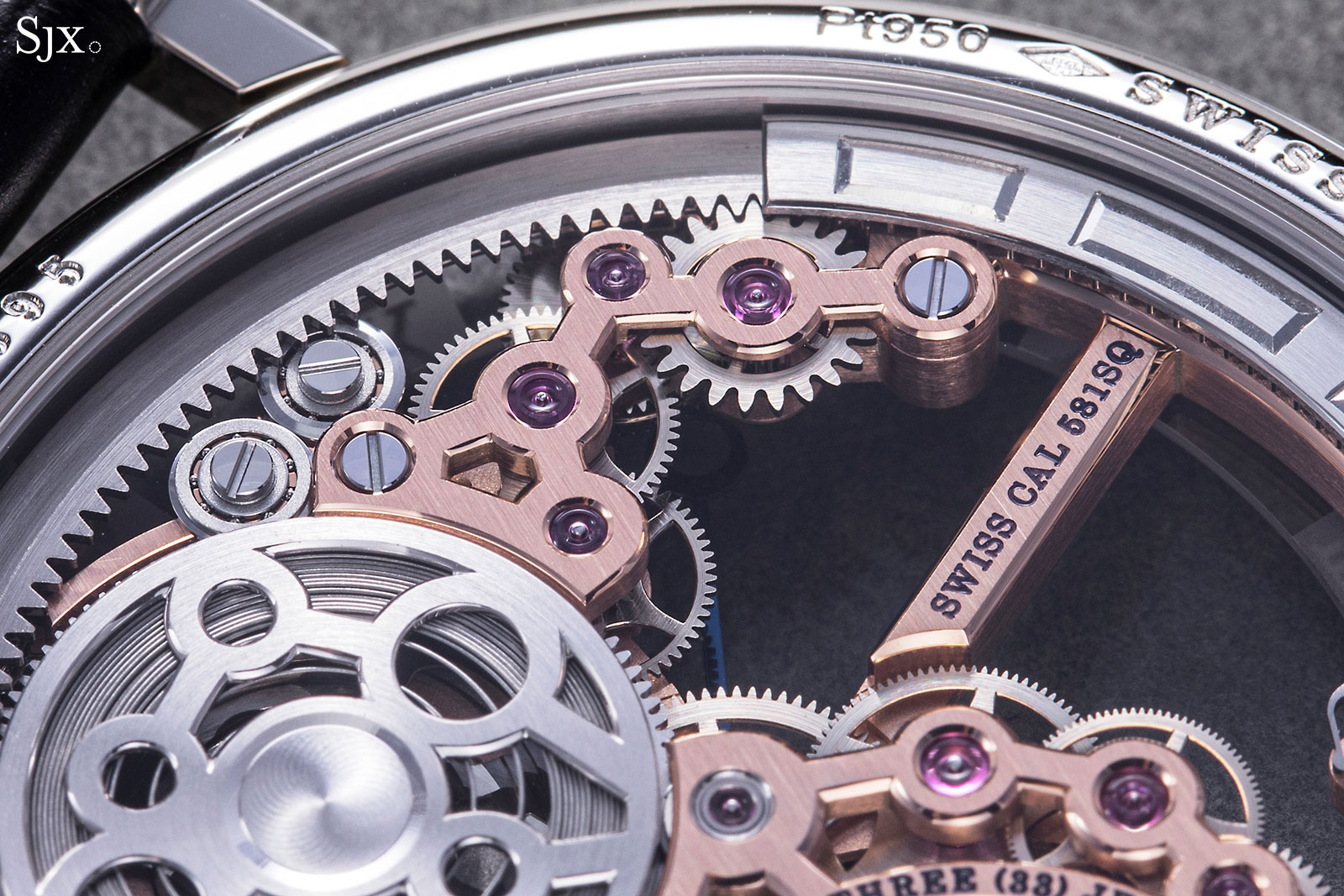
The winding mechanism of the peripheral rotor, with one of the rollers visible on the left
Concluding thoughts
In aesthetics, finishing and construction, the ref. 5395 is excellent, and proof that Breguet doesn’t need to go too far from its classical roots to create a beautiful, appealing timepiece.
But the price of the ref. 5395 is difficult to swallow. It’s about 50% more expensive than the ref. 5367, which has the non-skeleton version of the same movement and a fired enamel dial.
In its favour, the ref. 5395 is a more elaborate watch in all aspects, particularly in materials and decoration – in fact, it’s tough to find a contemporary Breguet with superior movement finishing – so it is probably justified.
And on the subject of price – the platinum versions costs about US$15,000 more than the rose gold model – and it’s better looking because of the rose gold movement framed by the white metal case – so it’s worth the upgrade.
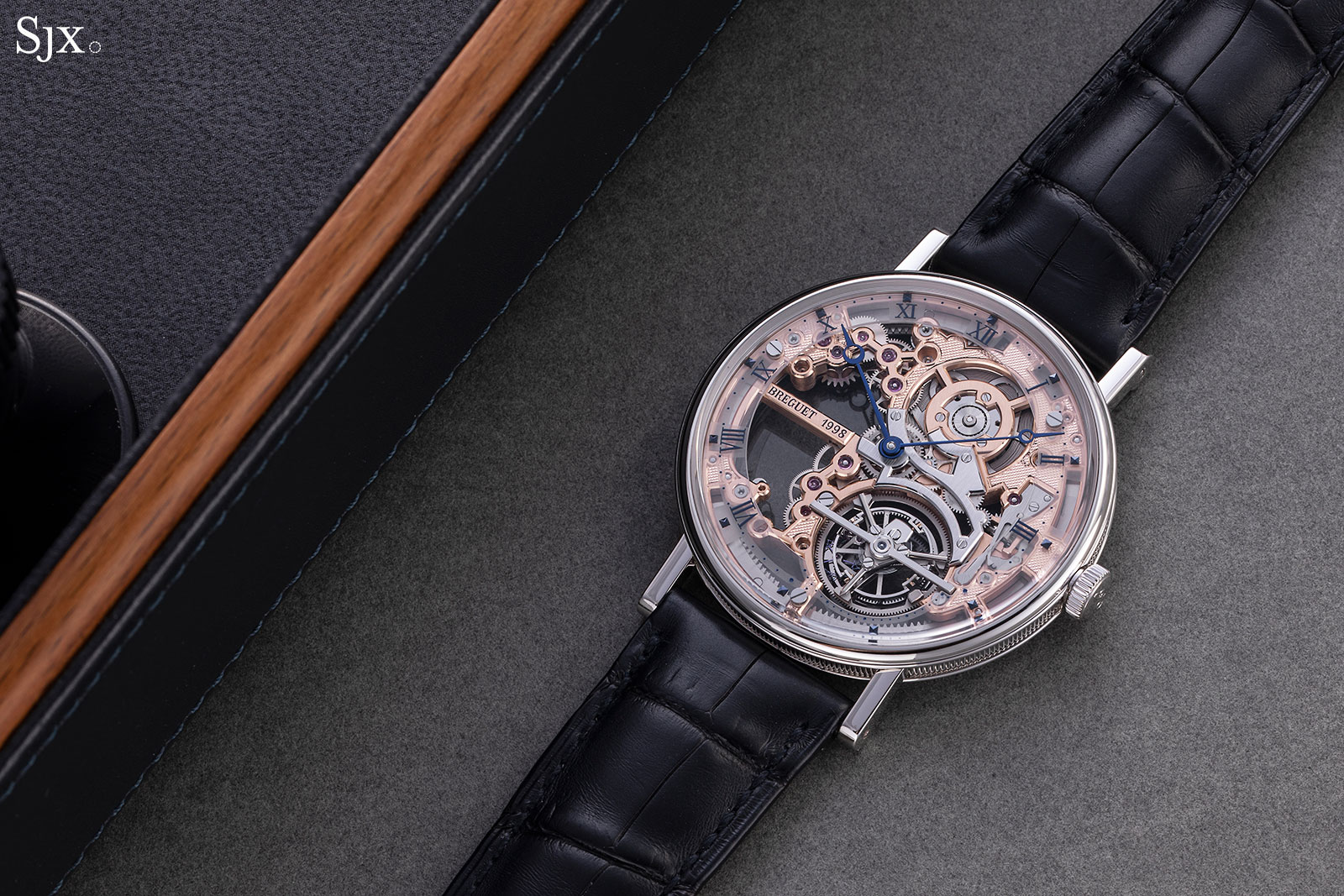
Key facts and price
Classique Tourbillon Extra-Plat Squelette 5395
Ref. 5395BR/1S/9WU
Ref. 5395PT/RS/9WU
Diameter: 41mm
Height: 7.7mm
Material: Platinum or pink gold
Water resistance: 30m
Movement: 581SQ
Functions: Hours, minutes, and tourbillon regulator
Winding: Automatic
Frequency: 28,800 beats per hour, or 4Hz
Power reserve: 80 hours
Strap: Alligator with folding clasp
Limited edition: No
Availability: Already at retailers and boutiques
Price: Platinum – US$240,600, or 345,700 Singapore dollars
Pink gold – US$225,200, or 323,700 Singapore dollars
For more, visit Breguet.com.
Back to top.

